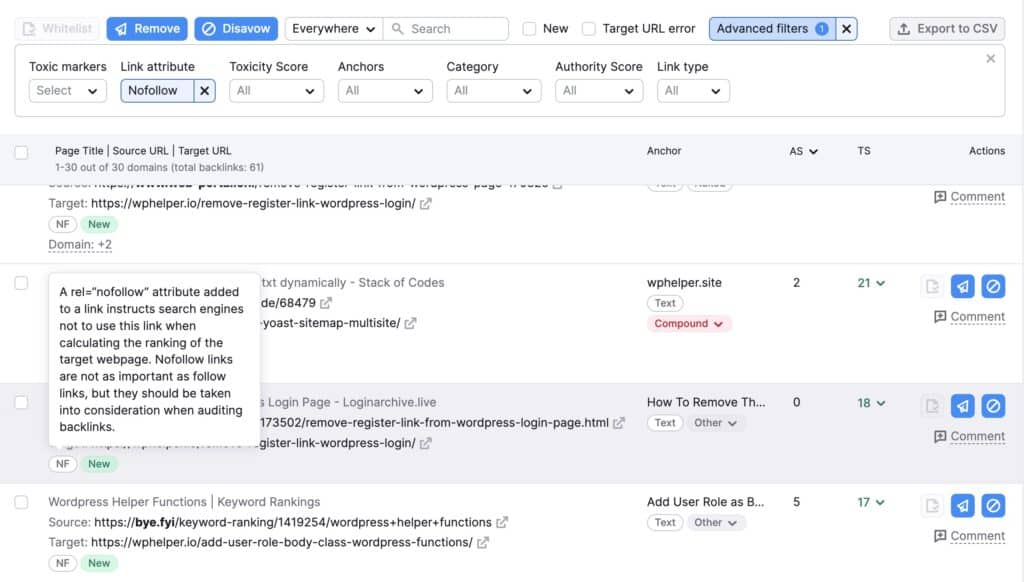Link building remains one of the most fundamental aspects of SEO. At its core, link building is the process of acquiring hyperlinks from other websites to your own, a practice that is instrumental in improving website visibility and organic search rankings. Search engines use these links to crawl the web, discover new web pages, and determine how well a page should rank in its search results.
However, not all links are created equal. In the SEO world, there are two main types of links that you need to know: do-follow and no-follow links.
Do-follow links, as the name implies, allow search engines to follow them and pass on link equity, thereby bolstering the linked page’s SEO value. They are often seen as the ‘gold standard’ of links due to their direct SEO benefits.

On the other hand, no-follow links are often misunderstood. Introduced by Google in 2005, no-follow is an attribute that can be added to links to signal to search engines that the link should not influence the ranking of the linked page. These links are typically seen as offering no SEO value, leading to the common misconception that they are worthless in a link building strategy.
But here’s the truth: no-follow links can and do add value to your SEO efforts, albeit in different ways than their do-follow counterparts. Overlooking no-follow links could mean missing out on valuable opportunities to enhance your digital marketing strategy.
Confused? Let’s Explain No-Follow Links
No-follow links are hyperlinks with the ‘rel=”nofollow”‘ attribute. This attribute instructs search engines like Google not to consider these links as a ranking factor for the linked page. In other words, unlike do-follow links, no-follow links don’t directly pass on any SEO value or “link juice” to the linked site.
The no-follow attribute was initially meant to combat spammy or low-quality links that were artificially inflating site rankings. Webmasters and site owners could utilize this attribute to prevent search engines from considering links they deem untrustworthy or irrelevant for ranking purposes. No-follow links are frequently used when a site cannot vouch for the linked content’s credibility, such as in blog comments, sponsored content, and certain types of user-generated content.
Despite their initial intent, no-follow links have evolved to serve several important purposes in the digital landscape. For instance, they help create a natural and balanced link profile, thus preventing your site from being flagged for manipulative link practices. They also drive referral traffic, increase brand exposure, and facilitate valuable relationships with other businesses or influencers in your niche.
However, no-follow links have been surrounded by several misconceptions. A common misunderstanding is that they are completely useless for SEO. While it’s true that they don’t directly influence your search rankings like do-follow links, they do offer indirect benefits. Another misconception is that no-follow links can harm your site. In reality, no-follow links from credible sites won’t damage your SEO efforts; in fact, they can signal to search engines that your site is associated with high-quality sites.
In short, while no-follow links might not carry the direct SEO benefits of do-follow links, they are far from worthless. It’s important to understand their unique value and incorporate them into a holistic and balanced SEO strategy.
The Value of No-Follow Links
Often undervalued, no-follow links do have a wealth of indirect benefits that can make a positive impact on your overall digital marketing strategy.

One of the most notable benefits of no-follow links is traffic generation. Even though no-follow links do not directly impact search engine rankings, they can lead interested readers to your site. If your link is placed on a high-traffic webpage or a post that gets shared widely, it can drive a significant amount of referral traffic to your site. This increases the visibility of your brand and could potentially lead to conversions, thereby creating an indirect SEO benefit.
No-follow links contribute to a more diversified and natural link profile. Having only do-follow links might appear suspicious to search engines, potentially leading to penalties. A balanced blend of both do-follow and no-follow links portrays a more organic link-building pattern that search engines prefer. It shows that your site is gaining links naturally, not just for the SEO benefits, and can improve your standing with search engines.
Let’s examine a real-world case study that underscores the importance of no-follow links. In 2022, an ecommerce company decided to enhance its link building strategy by incorporating more no-follow links. While they didn’t expect these links to impact their search engine ranking directly, they noticed an upsurge in their referral traffic. Over six months, there was a 25% increase in traffic from referral sources, much of which was traced back to their no-follow links. Simultaneously, their overall organic search rankings also improved, demonstrating that no-follow links, although indirectly, can contribute to SEO success.
While no-follow links may not pass on link equity, they are far from being invaluable. They generate traffic, contribute to a natural link profile, and, as the case study shows, can indirectly influence your website’s overall performance. Therefore, ignoring no-follow links might mean missing out on these hidden benefits.
Incorporating No-Follow Links into Your SEO Strategy
When building a robust SEO strategy, it’s crucial to understand the role and value of both do-follow and no-follow links. A balanced mix of these link types contributes to a natural and diverse link profile, an essential element in building trust with search engines and avoiding penalties associated with manipulative link practices.
Do-follow links undeniably hold their value in passing link equity, directly improving your site’s search engine ranking. However, the strategic use of no-follow links can drive significant referral traffic, enhance your online reputation, and even indirectly influence your website’s overall SEO performance, as discussed in our earlier case study.
Placement is key when it comes to no-follow links. Reputable sites and high-traffic platforms are the ideal places to consider. If a widely recognized website in your industry links to you, even with a no-follow attribute, it can send a positive signal about your brand’s credibility to both users and search engines. The potential for driving high-quality traffic from such sources is immense.
Most links from directories such as Design Rush will be no-follow, but the profile on the directory is still valuable. No matter your industry, these links are valuable and give your brand exposure.
Conclusion
Navigating the complex world of SEO and link building can be challenging, but understanding the value of all link types, including no-follow links, is a crucial part of the journey. Though no-follow links don’t pass on SEO value in the traditional sense, they offer several indirect benefits that can significantly impact your overall digital marketing strategy.
From driving valuable referral traffic to diversifying your link profile and fostering credibility, no-follow links can contribute to your website’s success in more ways than one. A balanced mix of do-follow and no-follow links, coupled with other effective link building strategies, is key to maintaining a robust and natural link profile that search engines prefer.
It’s time to reconsider the common misconceptions surrounding no-follow links. Remember, the world of SEO isn’t black and white, and a diversified approach often yields the best results. So, embrace the full spectrum of link building techniques, and don’t miss out on the potential hidden benefits that no-follow links can bring.
Other Effective Link Building Techniques
While no-follow and do-follow links are central components of link building, they are by no means the only strategies at your disposal. Several other effective techniques can further enhance your link profile and SEO performance, such as Q&A backlinks, guest posting, and broken link building.

Q&A backlinks are a unique and often overlooked strategy. They involve providing valuable answers to relevant questions on platforms like Quora, Reddit, or niche-specific forums and incorporating a link back to your website where appropriate. This not only positions your brand as an authority in the field but also drives high-quality traffic to your website. Moreover, these platforms often have high domain authority, so a backlink from them, even if no-follow, can be beneficial.
Guest posting is another tried-and-true link building technique. It involves writing a valuable piece of content for another website in your niche. In return, you usually get a do-follow backlink in the author bio or within the content. This not only provides a quality backlink but also helps to broaden your audience and increase brand exposure.
Broken link building, on the other hand, involves finding dead or broken links on other websites, creating content that matches the broken link, and then reaching out to the website owner to suggest replacing the broken link with a link to your newly created content. This can be a win-win situation, as it helps the website owner fix their broken links and provides you with a high-quality backlink.
At Contactora, we pride ourselves on our ability to effectively leverage a wide range of link building techniques, including but not limited to Q&A backlinks, authority links and broken link building. Our team’s expertise and innovative approach allow us to develop and implement a comprehensive, tailored link-building strategy that drives measurable results for your brand.






